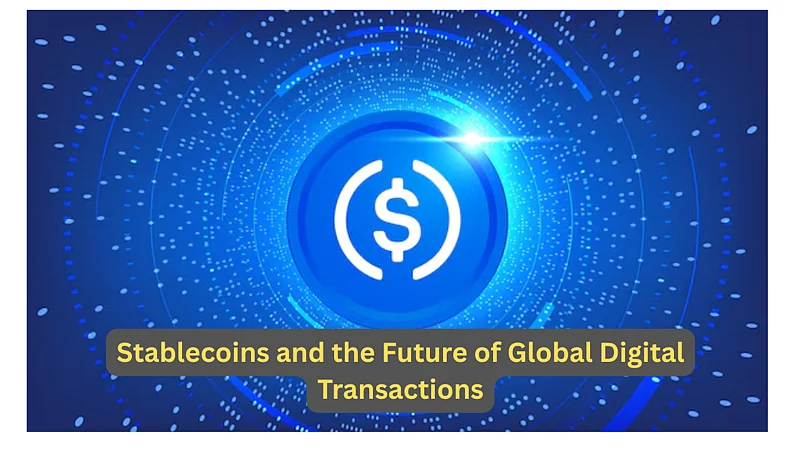In a world driven decreasingly by digital invention, the need for dependable, borderless fiscal systems has noway been more critical. From transnational e-commerce to migratory remittances, digital deals are woven into the fabric of our diurnal lives. Yet, volatility remains a patient hedge — especially when it comes to digital currencies. This is where the idea of a “ stable ” digital asset begins to draw attention.
Stablecoins, as their name suggests, are designed to maintain price stability in a unpredictable crypto- driven ecosystem. But beyond that, they may hold the key to transubstantiating how we move plutocrat across borders, support underbanked populations, and make fiscal systems that are presto, effective, and inclusive each without the price rollercoasters that have traditionally made digital currencies parlous for mass relinquishment.
Unlike academic digital means that frequently dominate captions, stablecoins operate still, anchoring themselves to real- world means or algorithms that minimize price oscillations. Their fairly predictable value makes them a promising tool for everyday deals, commodity numerous early digital currencies failed to achieve convincingly.
What makes stable digital means especially compelling is their implicit to blend the stylish of both fiscal worlds the invention and speed of decentralized networks, and the thickness and trustability anticipated of traditional plutocrat. This mongrel nature positions stablecoins not just as a tool for dealers, but as a future- facing medium for individualities, businesses, and indeed governments seeking to contemporize their financial fabrics.
Consider the complicate structure of transnational payments — lengthy transfer times, high freights, multiple interposers, and currency conversion complications. These challenges not only decelerate down business but disproportionately affect small enterprises and individualities transferring plutocrat abroad.
Stable digital currencies have the power to simplify and accelerate this entire process. Deals can be settled in seconds, at a bit of traditional costs, and with significantly smaller interposers. This makes them particularly seductive forcross-border commerce, freelancer payments, tourism, and transnational aid disbursements.
In regions with high affectation or profitable insecurity, the appeal of stable digital deals becomes indeed more pronounced. They can offer individualities a dependable store of value and a volition to unstable original currencies, frequently with nothing further than a mobile phone and internet connection.
Yet, the road to global relinquishment is n't without its obstacles. One of the most burning issues girding stable digital currencies is regulation. While their benefits are clear, enterprises around consumer protection, plutocrat laundering, data sequestration, and financial sovereignty persist.
Policymakers around the world are in colorful stages of defining how to govern these means. Some advocate for integrating them into being fiscal fabrics, while others push for stricter controls or indeed the development of state- backed druthers . For stablecoins to be extensively trusted and espoused, transparent governance, clear compliance protocols, and technological trustability are essential.
Also, public understanding remains limited. For numerous reasons, digital currencies are still synonymous with enterprise and query. Bridging this perception gap will bear coordinated sweats between technology inventors, fiscal preceptors, and nonsupervisory bodies.
Maybe the most transformative aspect of stable digital currencies is their eventuality to foster fiscal addition. Encyclopedically, over a billion people remain unbanked, lacking access to introductory fiscal services. Traditional banking systems frequently count them due to high costs, lack of attestation, or remote topographies.
Stable digital results can offer an indispensable path — one where digital holdalls replace bank accounts, where peer- to- peer deals exclude regulatory hurdles, and where addition is driven not by structure, but by law.
They could empower gig workers in developing countries, support smallcross-border businesses, and enable disaster relief finances to be transferred within seconds during an extremity. In this way, stablecoins are n't just digital plutocrats; they're an implicit vehicle for profitable quality and participation in the ultramodern frugality.
The future of global digital deals may not lie in academic highs or unpredictable maps, but in quiet, harmonious values that can be trusted and used by everyday people. While technological, nonsupervisory, and societal hurdles remain, the instigation behind stable digital currencies is inarguable.
As the world becomes further connected and digital-first, the tools we use to change value must evolve consequently. Stability — formerly considered an afterthought in the digital currency world — might just be the foundation upon which the coming generation of global finance is erected.
Stablecoins are n't simply a fiscal trend. They're a vision of what plutocrats could look like in a truly global, digital frugality.















